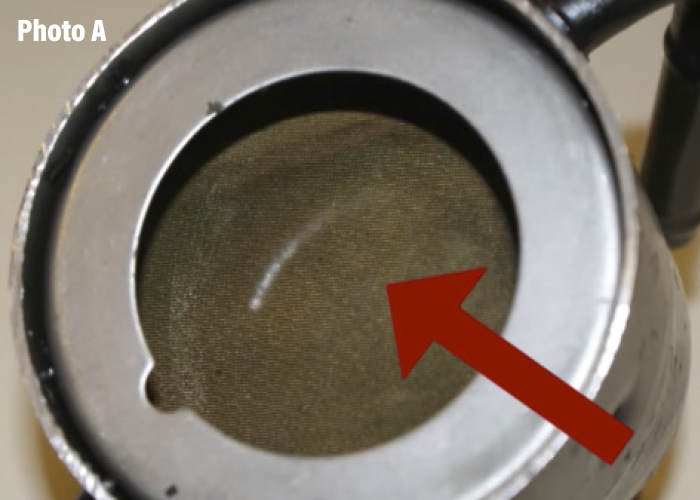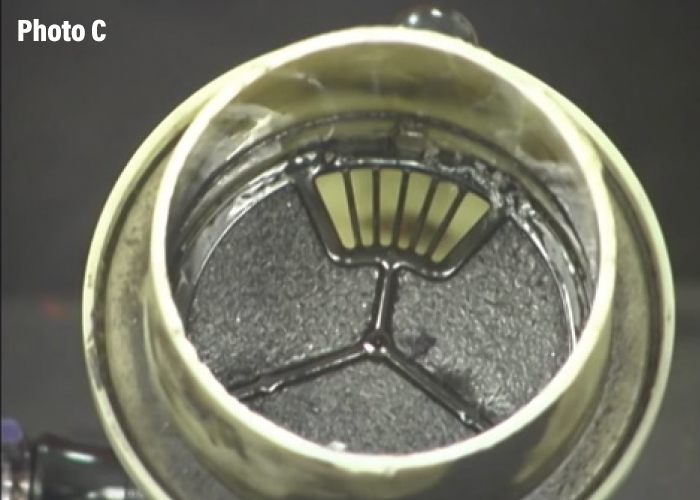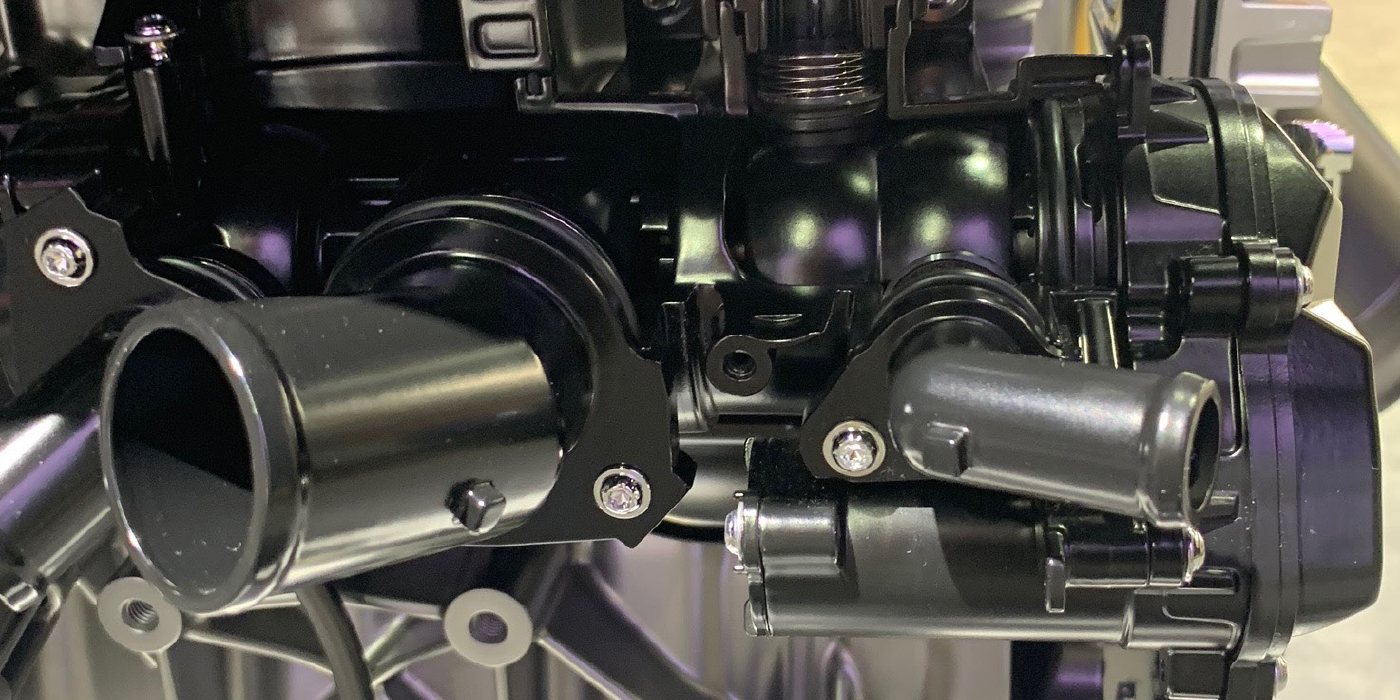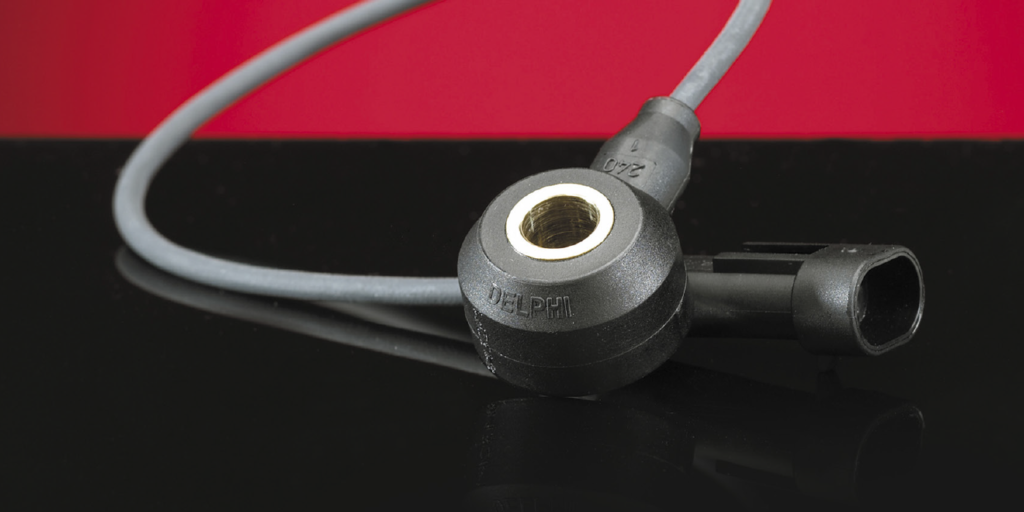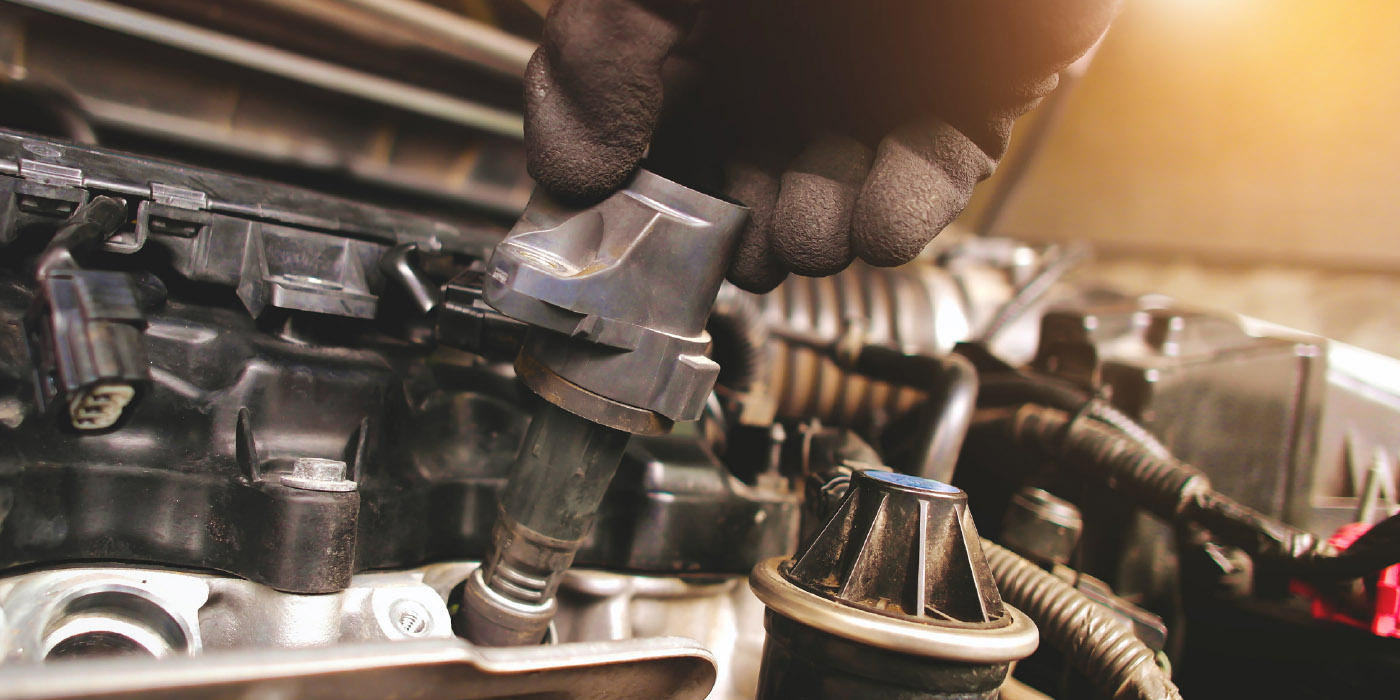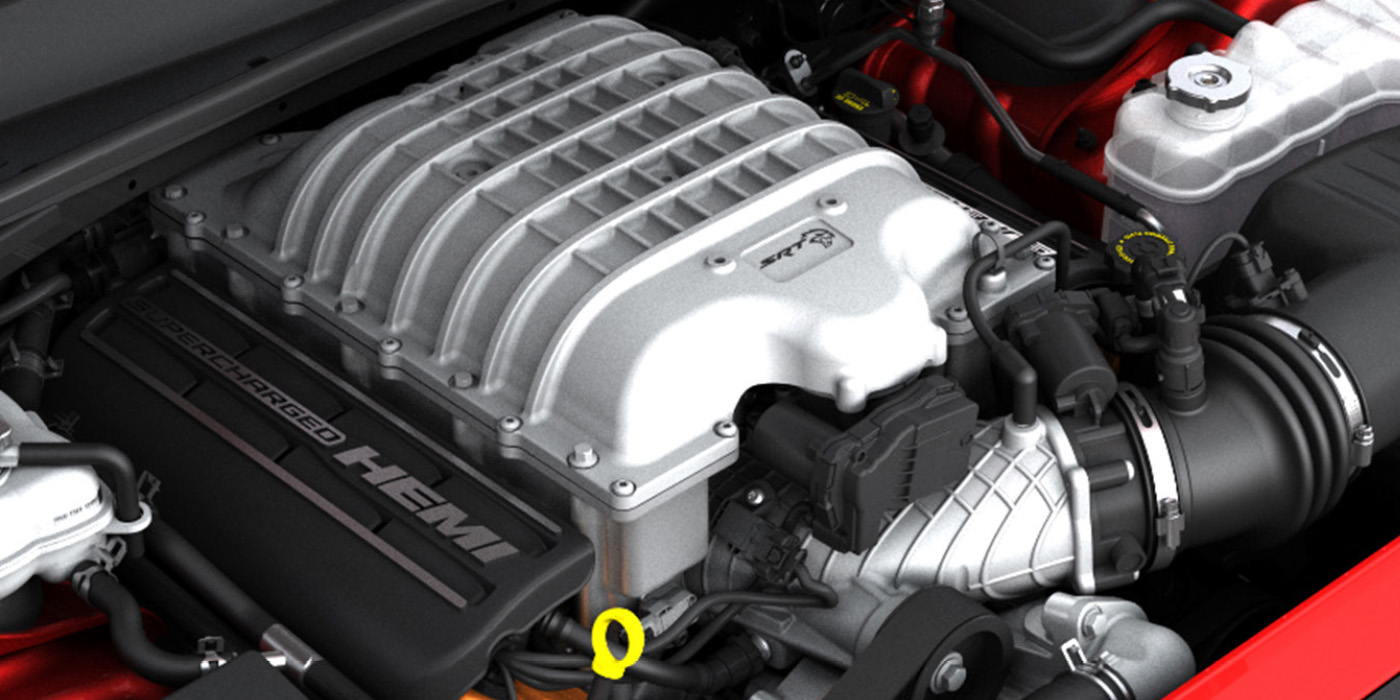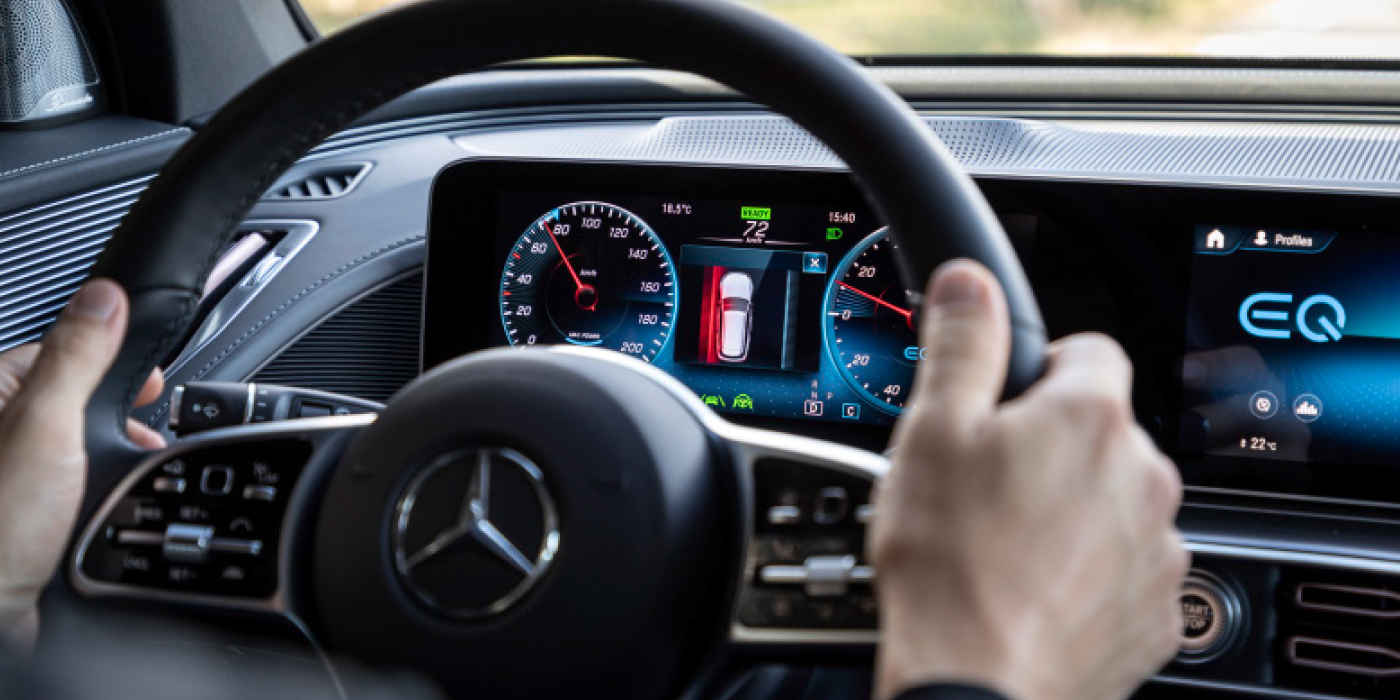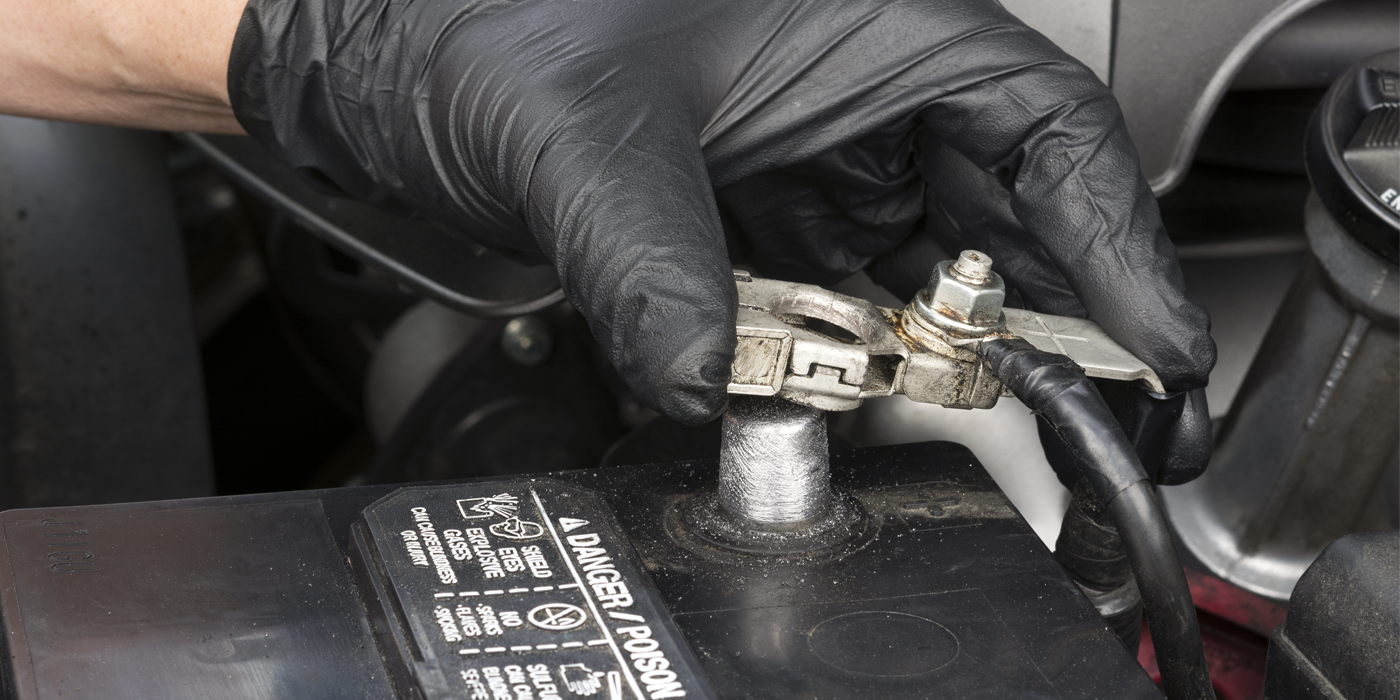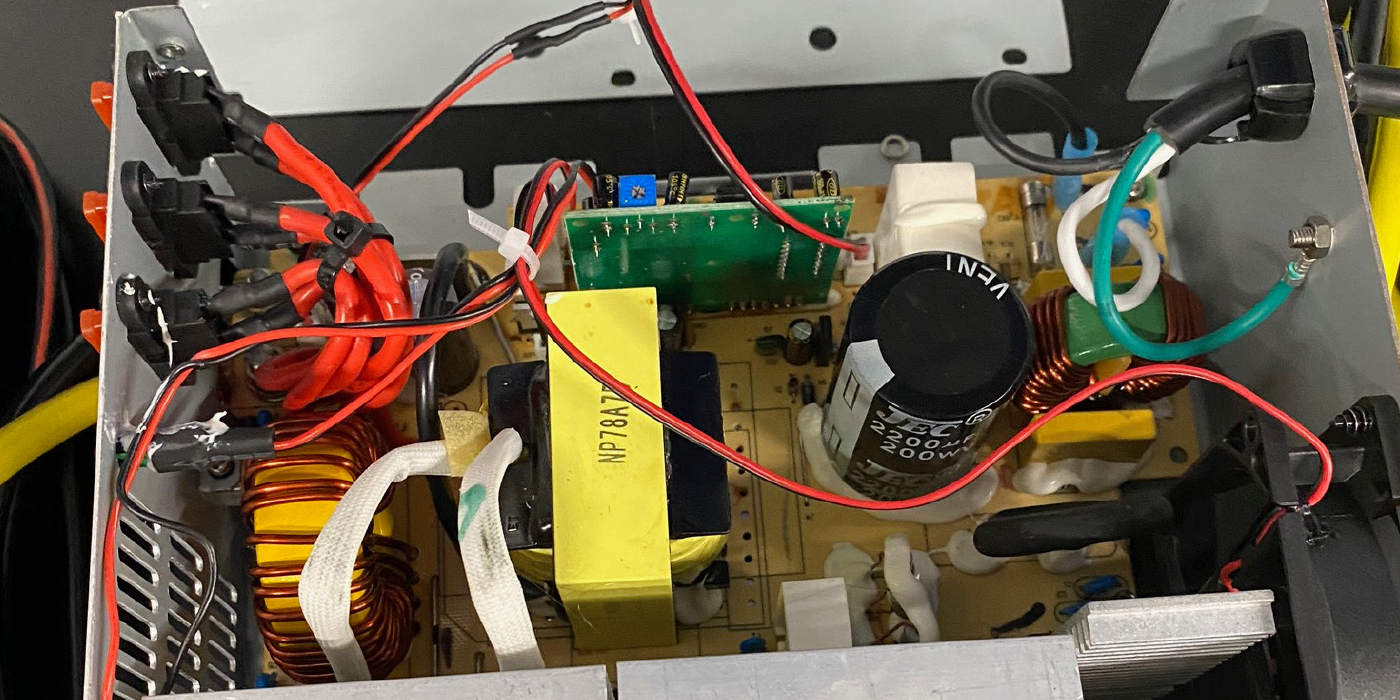Going through the process of installing a power steering pump with a remote or bolt-on reservoir sometimes leaves the pump noisy and lacking the proper assist. Before making the assumption that the replacement pump is bad, consider checking the bolt-on reservoir. There is a filter inside the reservoir designed to prevent debris from contaminating the steering system. The only drawback to this filter is that it doesn’t have a bypass capability. Once it becomes clogged with debris (see Photo A), it causes problems.
The screen on a clean filter (see Photo B) is free of debris and will allow power steering fluid to flow freely. If the screen is punched out (see Photo C), it will solve your immediate issue, but all the debris will immediately begin floating around in the system and cause damage to the internal parts or get jammed in one of the valves.
Brake and carburetor cleaners work well, but will cause seals and O-rings to swell and eventually leak if left in the system. Allow time for evaporation and use shop air to blow out any remnants.
Rinse out the screen with fresh power steering fluid as an extra safety measure. Replace reservoir O-rings with new O-rings that come with the new power steering pump assembly.
Courtesy of Cardone ProTech


